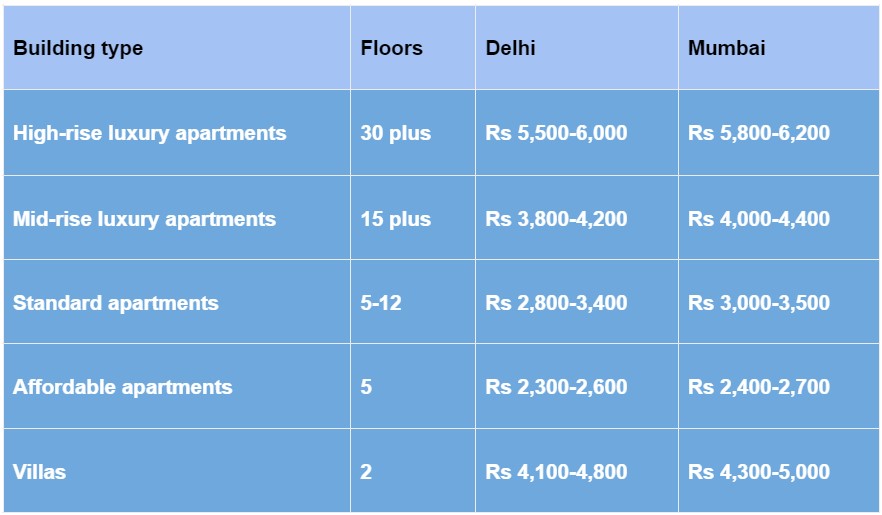When it comes to buying a residential unit in India, the floor or level of the apartment is a crucial factor for many homebuyers. While it is a common notion that apartments on higher floors command a premium price, the reality is that the value of these units may vary across locations. The surroundings of the project and the climatic conditions of the area may also play a vital role in determining the price of apartments on higher floors.

The growing population in the metro cities and the limited land availability has led real estate developers to opt for vertical expansion. Consequently, high-rise structures have become a popular choice among buyers. Not only does it help developers build more units on a smaller land area, but it also provides uninterrupted city views to the residents. However, the assumption that apartments on higher floors are always expensive may not hold true. The location of the project and the topography of the area, along with the climatic conditions and the surroundings, can significantly impact the value of apartments on higher floors.
To help you make an informed decision, we have compared two popular metro cities – Delhi and Mumbai. This comparison will provide you with a better understanding of how the floor level of a unit influences its price.
Apartments in Delhi
In Delhi, the trend of residing in apartments is not as common as it is in Mumbai. The majority of people in Delhi prefer independent houses or builder floors with 3 to 4 levels erected above the ground floor, which are known as G+3 or G+4 builder floors. This preference is largely motivated by the frequent occurrence of earthquakes in Delhi. Additionally, with commercial development being spread widely across areas in Central Delhi, Gurgaon, and Noida, Delhi has not experienced any significant space crunch that would necessitate vertical construction. The availability of land parcels at competitive prices, particularly in comparison to Mumbai, has traditionally shaped the housing demand in Delhi in favor of independent houses and builder floors.
Furthermore, Delhi experiences a continental climate, which makes summers extremely hot and unbearable. Since the lower-floor units are flanked by buildings on both sides, they receive less sunlight penetration, especially in the afternoon, as compared to the upper-floor units. This way, a ground-floor unit remains cooler during summers, reducing the dependence on air conditioners (AC) and utility bills.
Another significant factor is that lower floors offer better rental returns because Indians, in general, and Delhiites, in particular, prefer to live closer to the ground. This demand has led developers to charge a 5-10 percent premium for lower-floor apartments compared to high-rise developments in Delhi.
Apartments in Mumbai
Mumbai, India’s bustling metropolitan city, is known for its high-rise buildings. With land being both scarce and expensive, developers have no option but to build vertically. Living on the top floor of these high-rises has its own charm, as it offers breathtaking views of the sea and beaches, giving residents a peaceful escape amidst the chaos of city life. However, developers in Mumbai impose higher charges for higher floors and location preference. Since there are no set rules governing these charges, developers may charge an exorbitant additional price per square foot for a unit’s super built-up area.
Living on lower floors in Mumbai can be a challenge, as the streets are often congested and noisy, making it difficult to maintain privacy. Security is also a concern, as ground floor units or lower floor apartments tend to pose a higher risk of burglary. Hence, most homebuyers prefer higher floors to avoid external noise levels and maintain better security.
Mumbai’s climate, characterized by recurring rains, is another factor to consider. Ground floor units are often poorly ventilated and suffer from floods and insect infestations during monsoons. The high levels of ambient humidity and latent heat levels in these units can be uncomfortable for residents.
Shashank Vashistha, Executive Director of eXp India, states that both Mumbai and Delhi are prime real estate destinations in India. In Mumbai, higher floors are more valued as builders charge preferential location charges for unrestricted views of the city and the breeze. These properties are usually priced at least 3-5% higher than other residential units in the same project.
In Delhi, lower floors are in high demand, and therefore, are more expensive. However, some high-rise projects in South Delhi and Gurgaon are now charging preferential location charges on higher floors and penthouses too.
Cost of constructing residential units
When it comes to high-rise buildings, ensuring the safety and structural integrity of the architecture is of utmost importance. Sanjeev Chandiramani, the Chief Operating Officer of Ruparel Realty, explains that constructing higher floors requires advanced technological engineering to maintain the optimum load capacity and ensure the safety of the residents. However, this process can be quite expensive and result in higher prices of the apartments.









